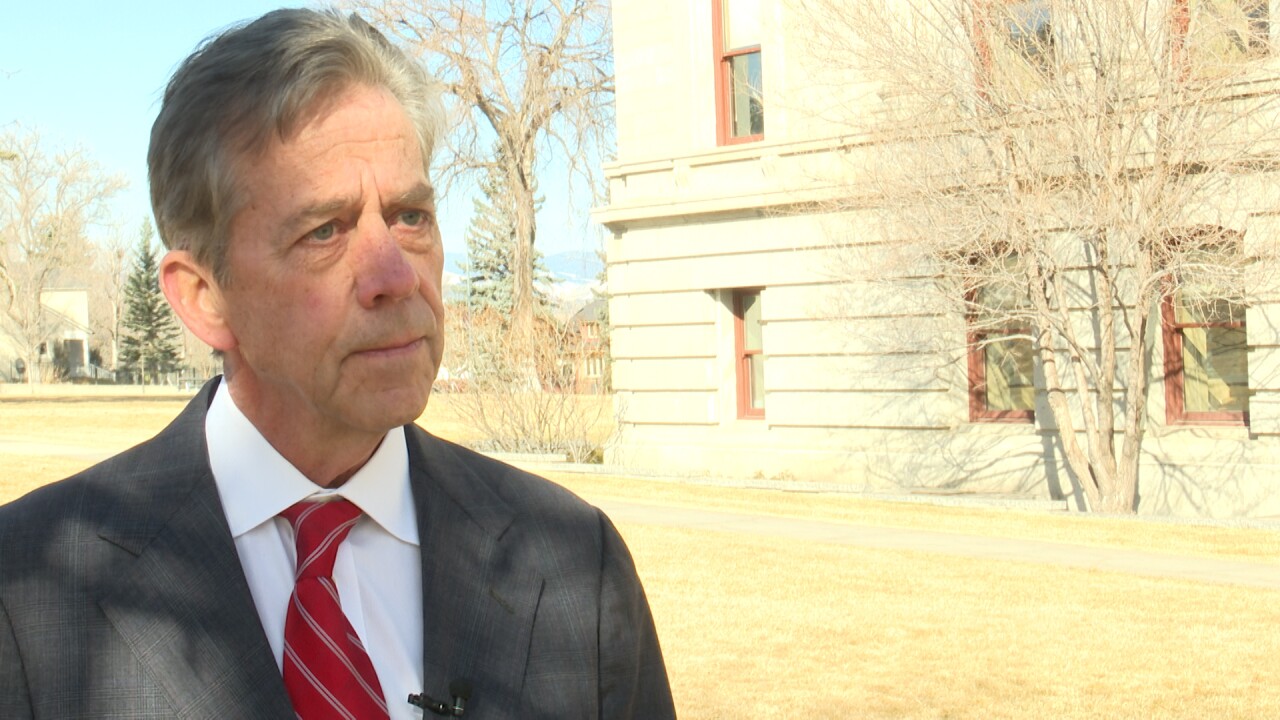Editor’s note: This is the third of a three-part series on federal COVID-relief funds in Montana – which will top $7 billion.
As broad swaths of Montana still have substandard high-speed Internet or cell-phone service – or, none at all – the Gianforte administration is launching a federally funded $275 million-plus effort to improve that picture.
The money is from the American Rescue Plan Act (ARPA), passed by Congress this March, without a single Republican vote.
But Republican leaders in Montana, with bipartisan support, have set up a commission and process that could start approving projects later this year.
- PART I: Gianforte admin preps to distribute more than $1.6B in federal COVID-relief funds
- PART II: COVID-relief loans pumped $3.2B into MT small businesses
“The quicker we can get the funds out there, the quicker we can serve Montana,” Sen. Jason Ellsworth, R-Hamilton, told MTN News. “We know that we’re dead last in the country for (Internet) speeds, and we know at the end of the day, we are transforming our economy digitally.”
Ellsworth is a member of the nine-member Communications Advisory Commission, which holds its first meeting Tuesday in Helena and will outline how it plans to process broadband expansion proposals from private companies or partnerships between those companies and local governments.
He also sponsored the bill that put into law detailed guidelines for project priorities and evaluation of those proposals.

“I’ve (already) had about three or four companies reach out to me and say, `When do we get to start getting projects out to you?’” Ellsworth said. “`When are you going to start looking at mapping?’ They’re asking questions now. And, we’re going to have answers.”
The commission will review the proposals and make recommendations to Gov. Greg Gianforte’s Department of Commerce, which will make the final call.
Yet while the panel could be reviewing projects later this year, construction is likely at least a year away, or longer, industry officials and others say. Contractors and equipment must be lined up and rights-of-way obtained, which all take time.
“We’re competing with these other states across the nation for this (fiber-optic) fiber,” says Rep. Katie Sullivan, D-Missoula, another commission member. “That could hurt the timing if they can’t access it.”
Sullivan said she hopes the state will begin seeing actual projects “in a year or two,” and that she expects state officials will be updating the public on where projects are scheduled in the future.

Still, many questions remain to be settled, such as whether the money can be used to finance wireless towers, as well as cable in the ground; or the accuracy of maps and other sources to determine which areas are unserved or underserved.
“It’s still early to determine how it’s all going to fit and work,” says Geoff Feiss, general manager of the Montana Telecommunications Association, which represents many Montana small and medium-sized telecom companies and co-ops. “But I’m fairly confident that the structure will result in the best possible outcomes.
“There is some natural tension going in. The commission is a great place to bounce these ideas around.”
The law sponsored by Ellsworth says “frontier” areas – where no high-speed Internet access exists – or other “unserved” areas with less-than-adequate speeds are a priority. Yet it also contemplates upgrading existing infrastructure in places that already have access, to increase speeds that can handle the needs of business or other big consumers.

“I look at where I live, two miles from town, and between me and the town, there’s probably about 100 houses and 50 houses in that last mile (without good service),” Ellsworth said. “I think that’s where we’re really going to see the benefit.”
Private Internet-service providers can submit proposals but must provide at least 20% of the cost of the proposed project. They also can partner with local governments, which could provide some additional matching funds, too.
Sullivan said she hopes local officials can partner with Internet-service providers to target areas of future growth, including schools.
Ellsworth also said he hopes private companies compete for the money, perhaps by offering a greater match – and thus expanding the buying power of the $275 million.
“We want to see competitiveness,” he said. “When you start working the math that way, you could definitely end up with a scenario where the $275 million could potentially pay for half a billion dollars worth of projects.”
Feiss agrees that the ultimate investment will be more than $275 million – but says to bring high-speed service to all of Montana would take “upwards of $1 billion.”
However, Ellsworth says the structure created by the commission and the law he sponsored is designed to handle more money and more expansions if that cash becomes available – such as through the new infrastructure bill being considered by Congress.
“We need to get Montana situated, wired up, and moving in the right direction for the people,” he says.




